We woke up around 4:30 am to arrive at the Tsukiji fish market around 5 am. We did this in order to get in line early to Sushi Dai, which was a sushi restaurant featured in many YouTube travel videos and tourist sites. Tsukiji fish market is also a very famous location in Tokyo, where they import fresh seafood every morning. All of the top tier restaurants arrive super early everyday to pick-up or bid for the best fishes. Even though the fish market was only a 10 minute walk from our hotel, we still found ourselves behind around 30 people for the Sushi Dai line.
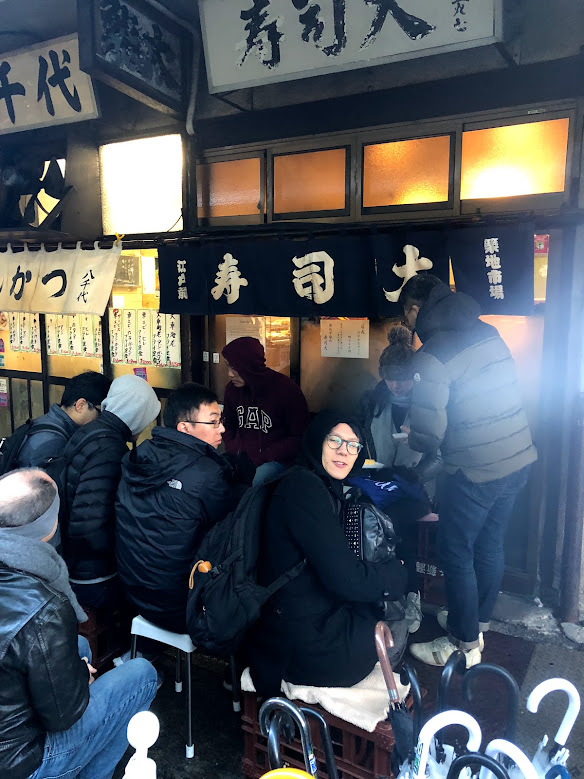 |
| Morning has broken and we're almost there |
We waited around 3.5 hours, from twilight to dawn. The reason for such a long wait was because the restaurant was very small and could only fit about 10 people. The most popular course selection was the omakase, where the sushi chef decides himself what to make. This omakase was 10 pieces of nigiri, 9 of them were a set course while the last piece was a wild card that could be chosen. I believe that the omakase would vary based on the season and availability of fish. As we were getting closer towards entry, the hostess would come out and ask us what we'd be ordering. They also came out served us cups of hot tea.
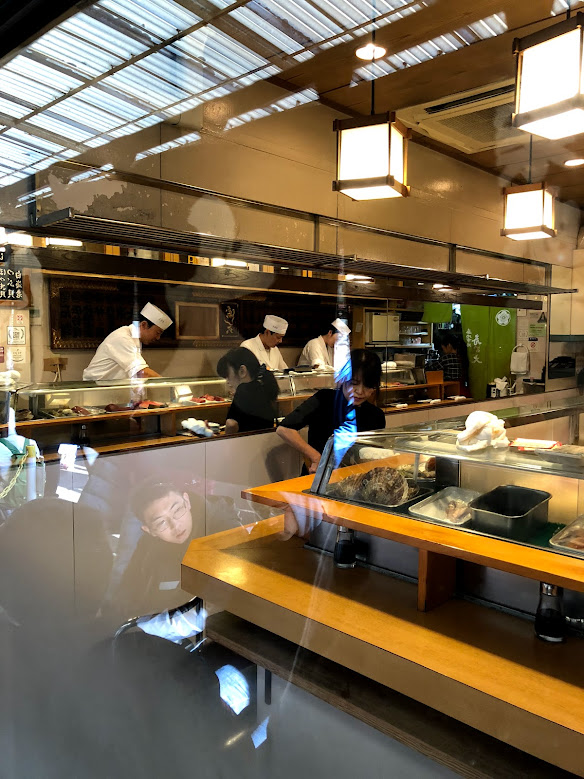

The environment enhanced the dining experience. The surrounding patrons shared a sense of comradery from coming all over the world, waiting hours in the dark and cold, and finally being admitted into the warm and cozy restaurant. When our group (the set of 10 people we were in) was allowed in, we were welcomed by the enthusiastic sushi chefs. Their English was functional, however it was more easy to read their body language and expressions.
We were first served hot matcha tea, a sweet egg sponge, and miso soup as appetizers. I have to stress how tight the spacing was; we were seated in bar-stools to watch the sushi chefs create, with only about a foot between our backs and the wall. The waitress had to squeeze her way back and forth, carrying or clearing dishes. She also had to go outside frequently to check on the queue, and set up the next group to come in.
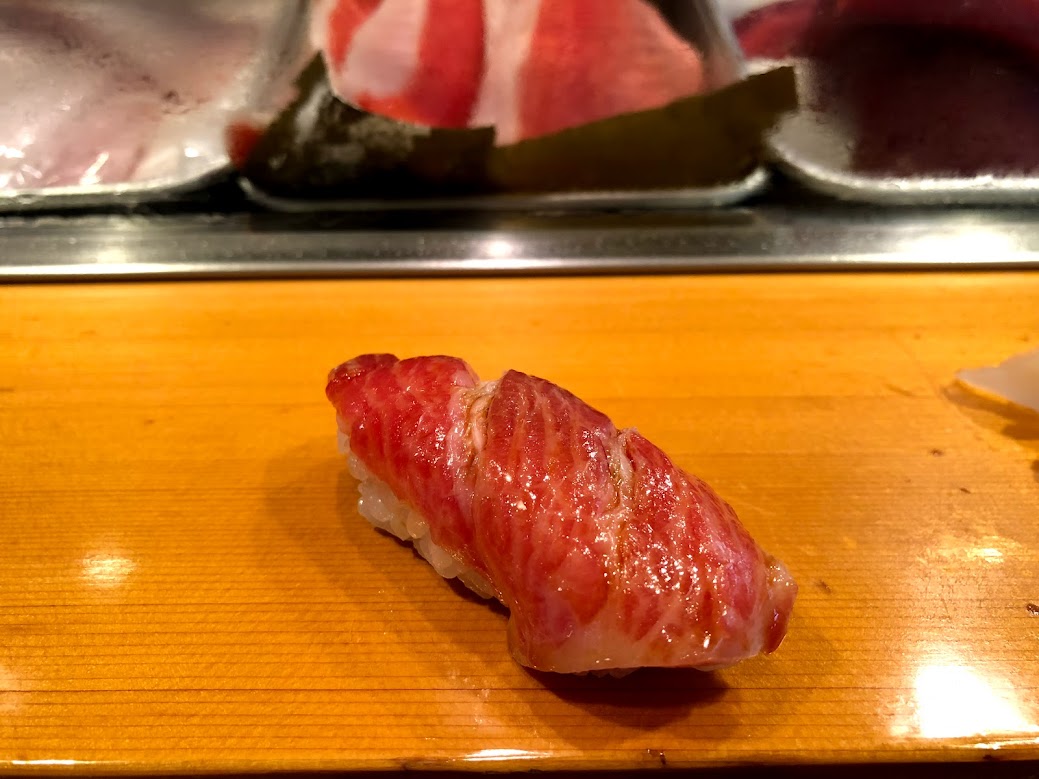 |
| #1: Fatty tuna nigiri |
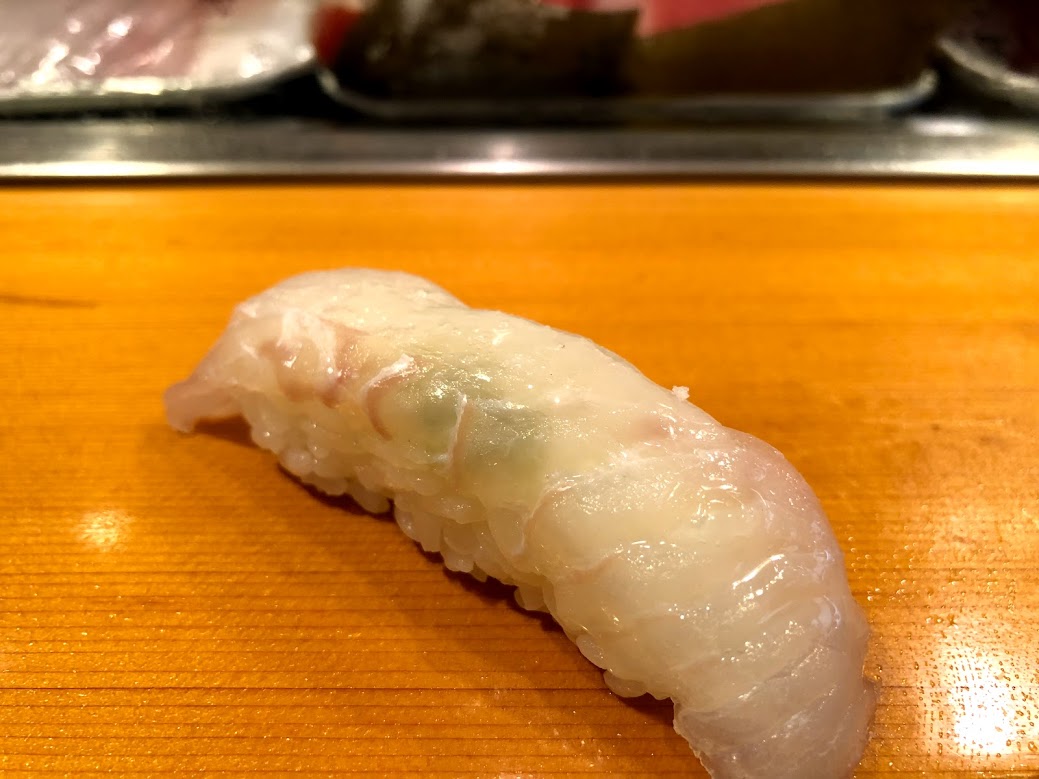 |
| #2: Flounder nigiri |
The sushi chefs would take about 5 seconds to create each nigiri. Because many people ordered the omakase, we would all have the same types of nigiri and be served at the same time. The fact that people were also eating the same piece and the same time made it even more of a shared experience. Each nigiri was absolutely gorgeous, which is not a word I would usually use for food. The fish on top would always be cut perfectly, have a brilliant color, and be shaped aesthetically with the rice.
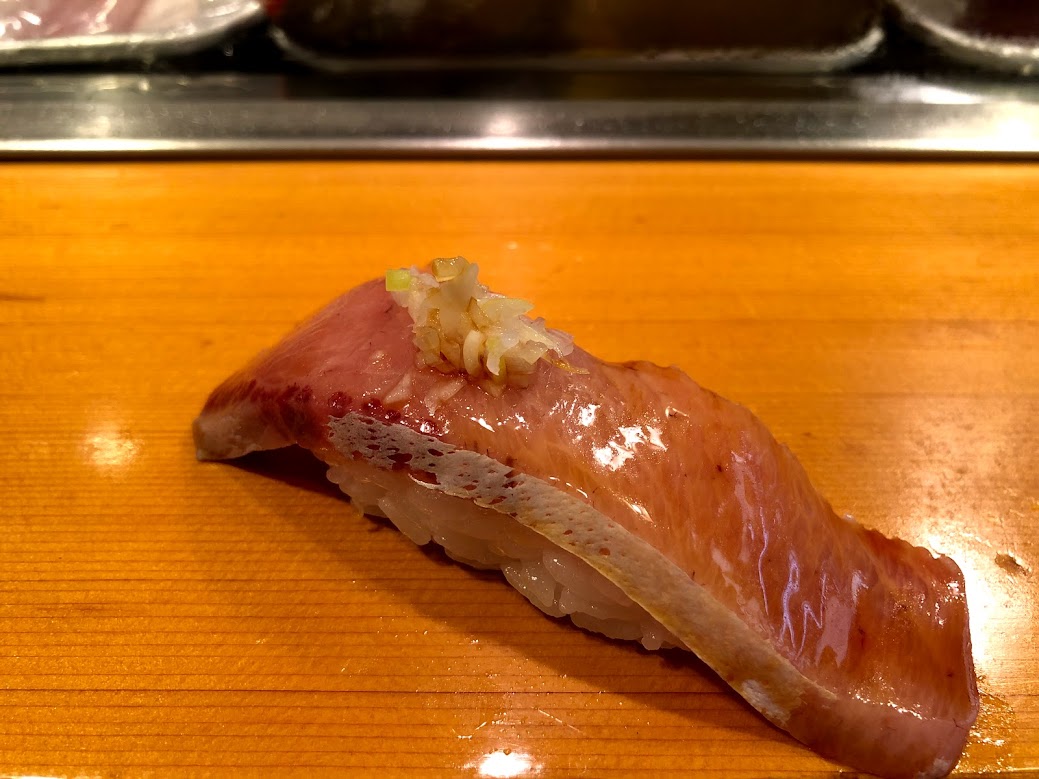 |
| #3: Yellowtail nigiri |
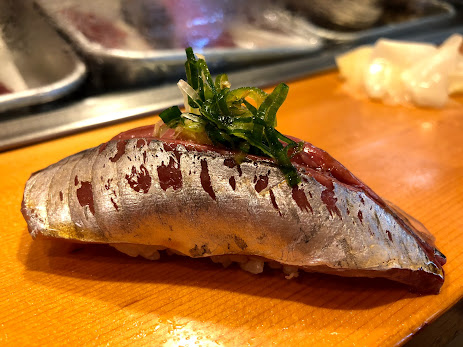 |
| #4: Mackerel nigiri |
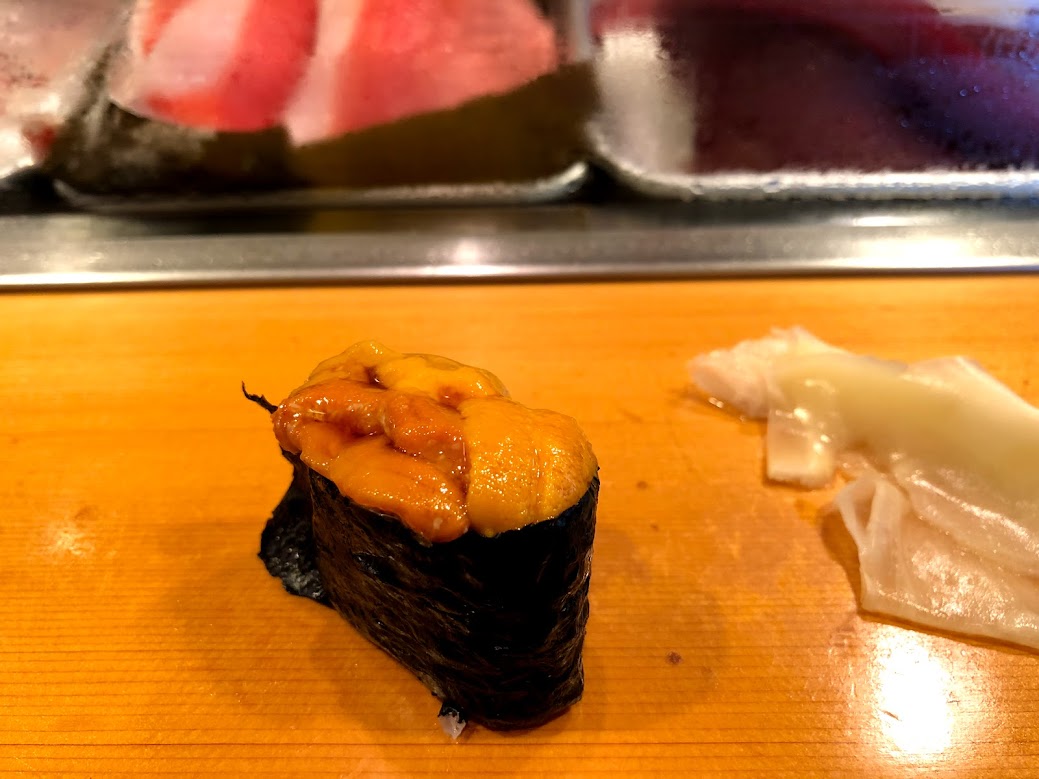 |
| #5: Sea urchin nigiri |
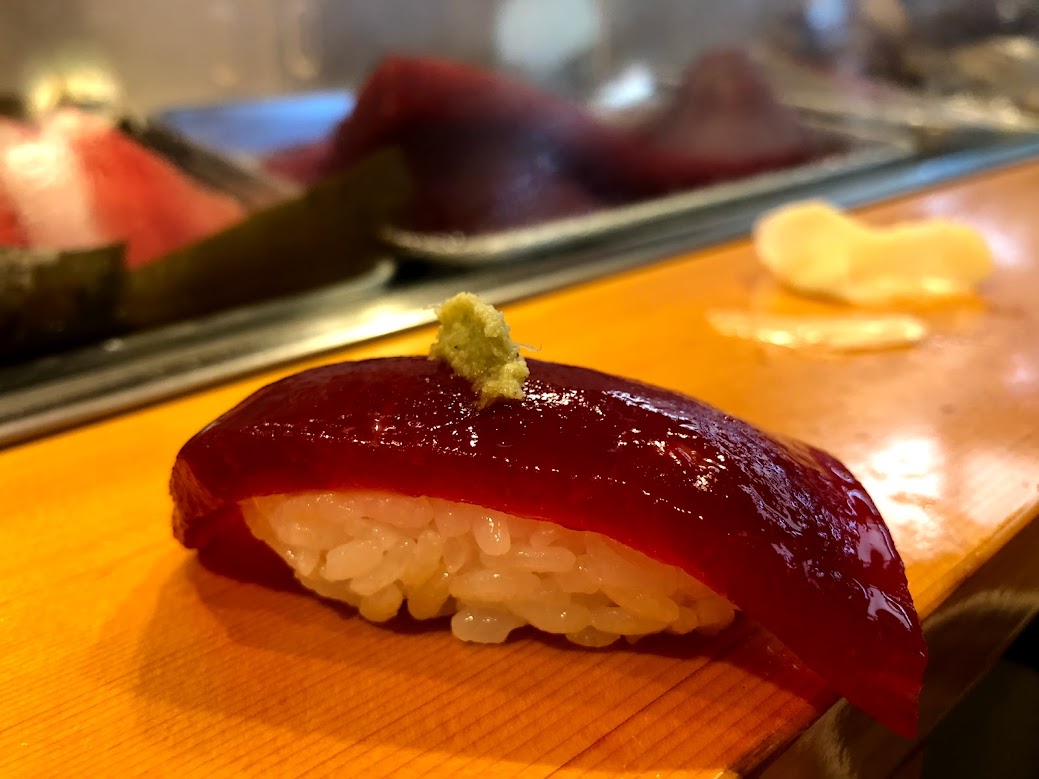 |
| #6: Lean tuna nigiri |
My favorite sushi has always been tuna, which is the most celebrated fish in sushi. The lean tuna nigiri was a shiny ruby red, and was draped over the rice. Other tuna nigiri I’ve seen have been more pink with a sort of spongy appearance, likely caused by freezing. But it was clear that this tuna was very fresh.
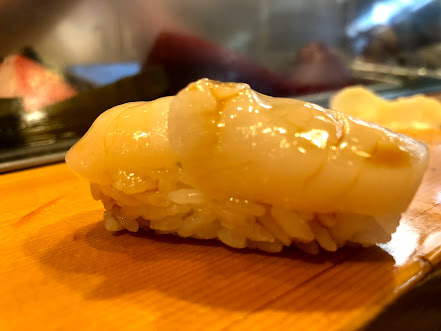 |
| #7: Scallop nigiri |
 |
| #8: Spanish mackerel nigiri |
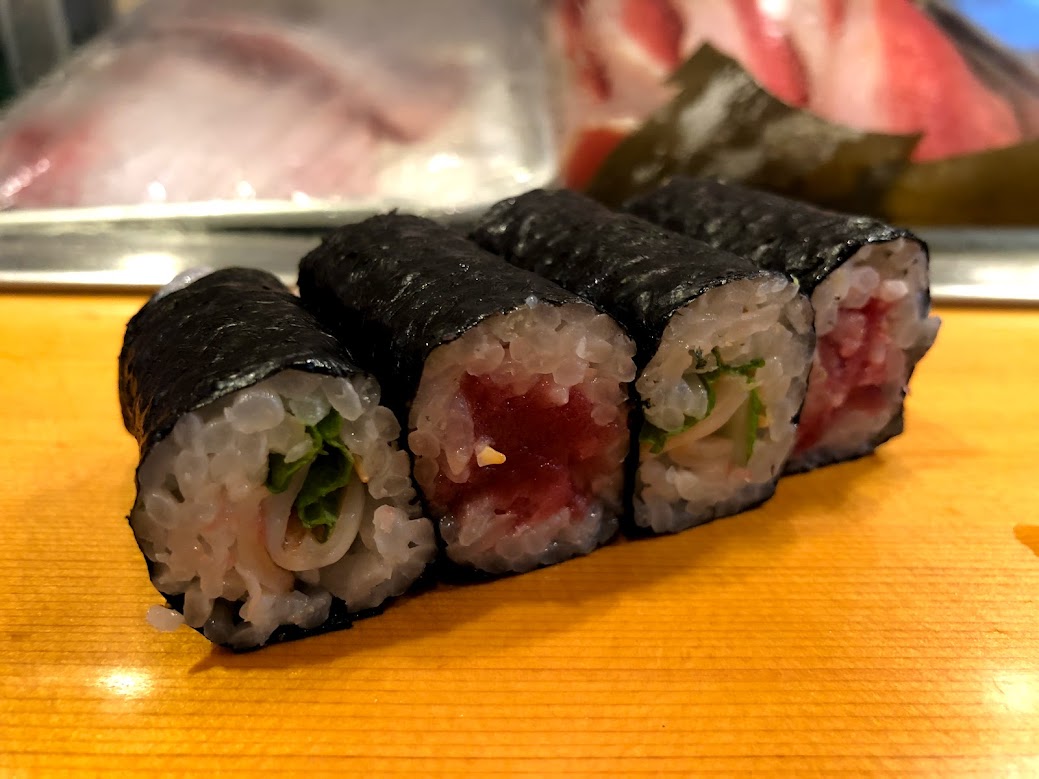 |
| Tuna and cod makis |
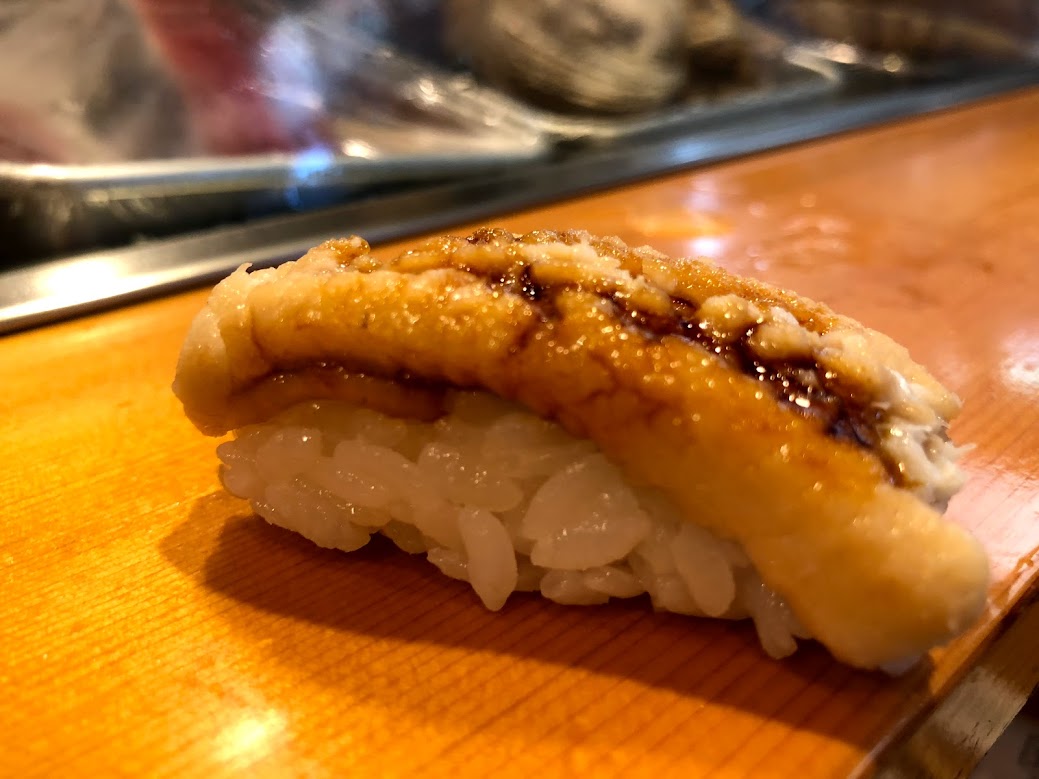 |
| #9: Eel nigiri |
The taste of the sushi was obviously very good. It separated itself from other sushi by the attention to detail. The proportion of fish to rice is very important, but these sushi chefs also made sure that each component had optimal temperatures for texture and flavor. The rice was very warm, making it soft and light. This means that the rice wasn’t densely packed together, so that it would break apart evenly and complement the fish while chewing. The fish itself was usually room temperature, however I’ve seen videos showing how much type of fish has its own optimal conditions. Needless to say, it was very good.
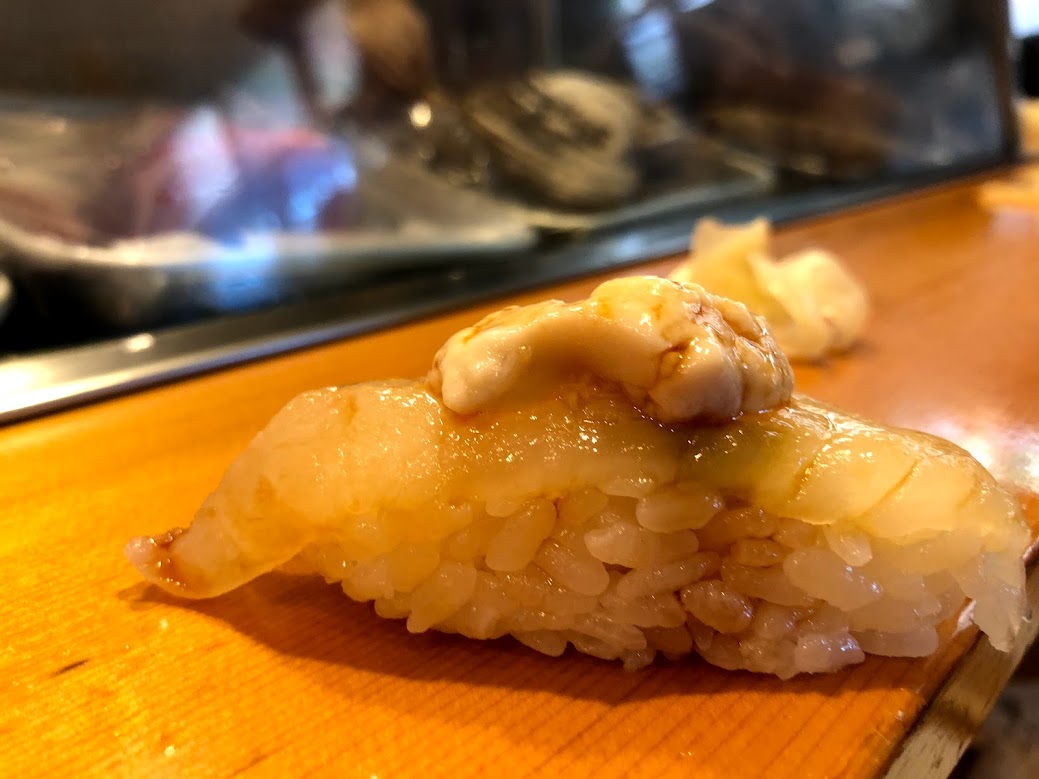 |
| #10: Filefish (chef's favorite) |
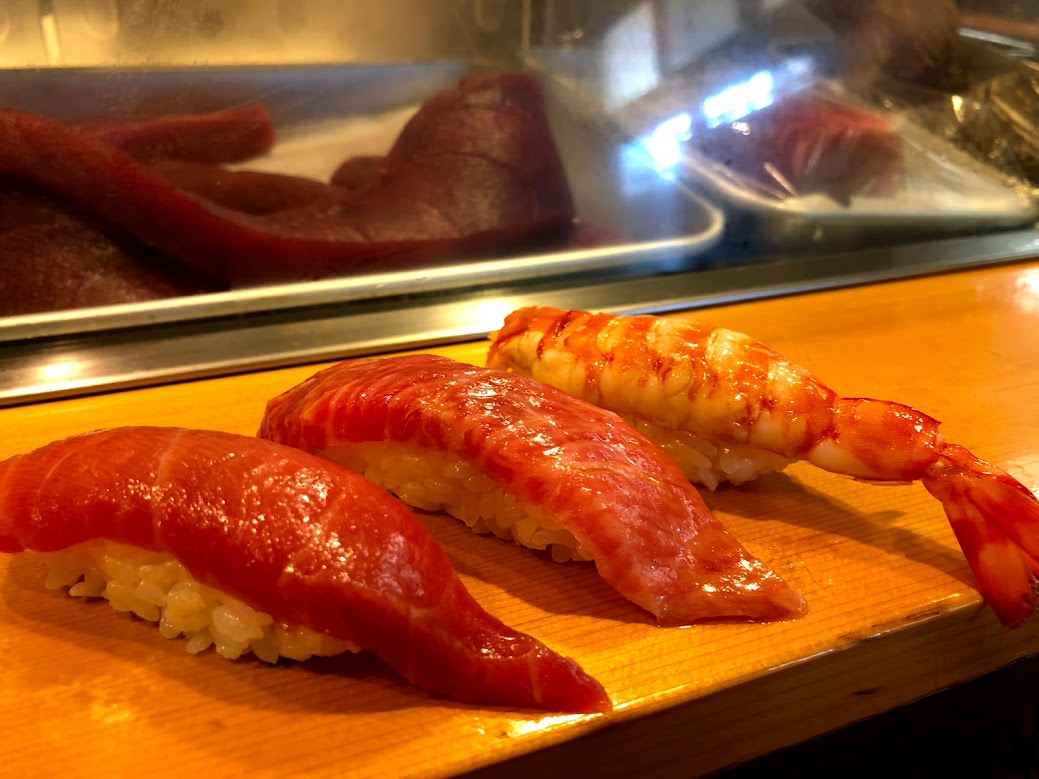 |
| Extra round: Lean tuna, semi-fatty tuna, and shrimp nigiris |
The whole dining experience took about an hour, which further explains why each group would take so long. Each nigiri was spaced out within minutes, likely to provide the customers time to savor, photograph, and discuss each piece. My favorites were the lean and medium-fatty tuna, but I found the fatty tuna to be a bit too rich. The 10th piece we ordered the filefish, which was the sushi chef commented as his favorite. I initially thought I wouldn’t be full on just 10 nigiri, but I did find myself extremely satisfied after the last piece. It was unlike sushi buffets I’ve gone to before, where I would eat as much as possible in order to maximize value. But I would then be uncomfortably full after eating a high quantity of low quality sushi, and would then regret my decisions. Xuezhu did order 3 more nigiri because she was absolutely amazed by the sushi.
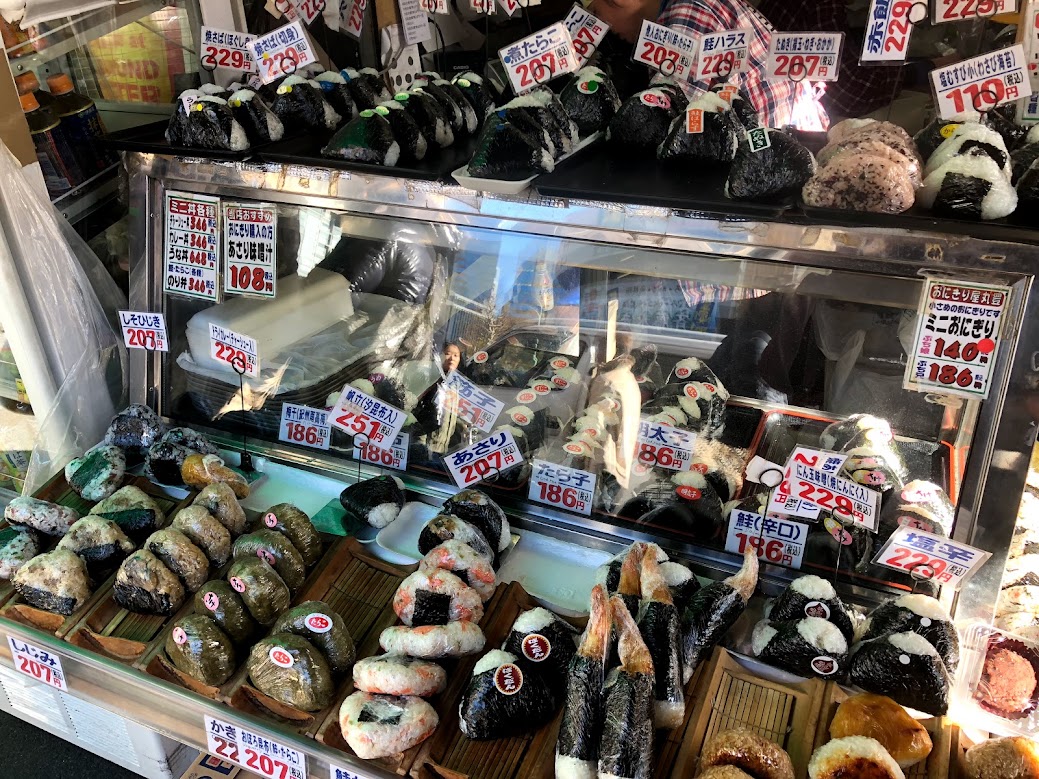 |
O-nigiri: seasoned rice balls, sometimes with sweet or savory fillings
A common snack, like a pastry |
We finished our breakfast around 10 am, and returned to check out at our hotel. They allowed us to keep our luggage there until the afternoon. After a short break, we returned back to the Tsukiji market, which was now bustling with activity, to try the variety of street food. There were many stalls selling fresh sushi at reasonable prices. Other stalls were for vegetables, dried seasonings, and seafood. Japan is known for having super expensive fruit, with a single melon costing up to 15,000 yen. The reason for this is due to highly selective breeding and genetic engineering to get super aesthetic and sweet fruit.
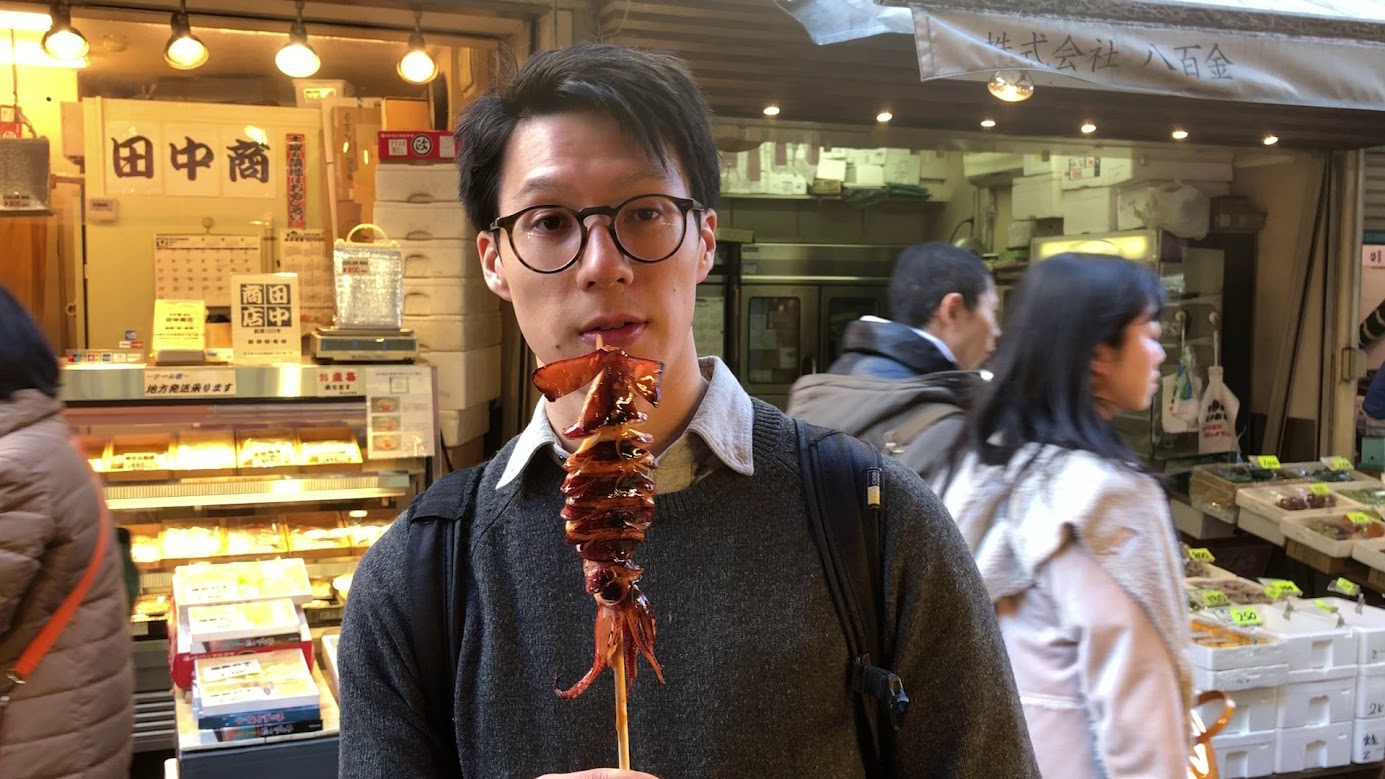
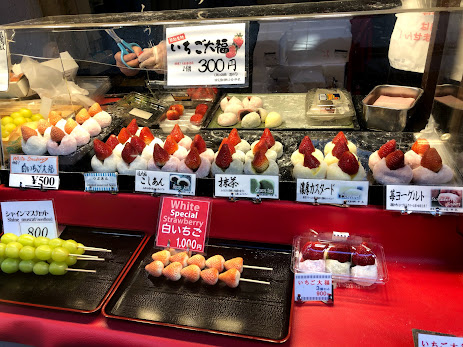
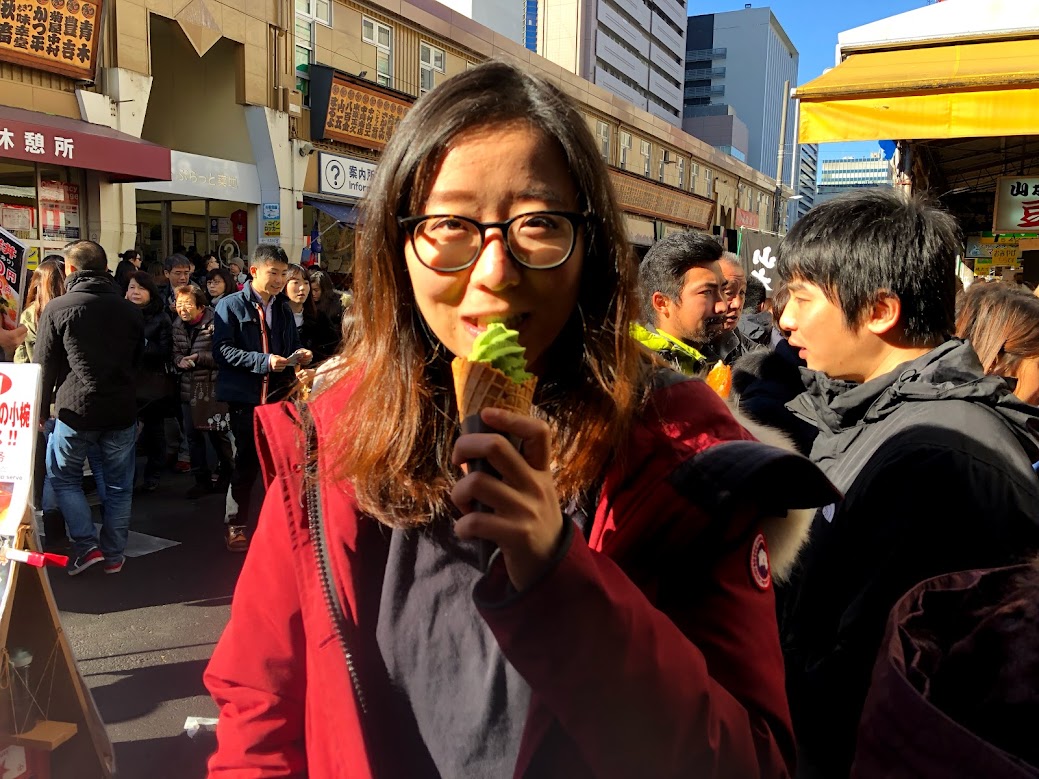
All of the street food served as our lunch, and in the afternoon we were satisfied with Tsukiji market. This included freshly grille scallops, oysters, squid, crab, and eel. There wasn't too much seasoning on them so the natural taste could be appreciated. For desserts, there were fresh fruit mochi and match ice cream. The juicy strawberry balanced the creaminess of the red bean and rice cake. The prices were a little expensive, with skewers or dishes costing around 600-1000 yen ($5-10 USD)
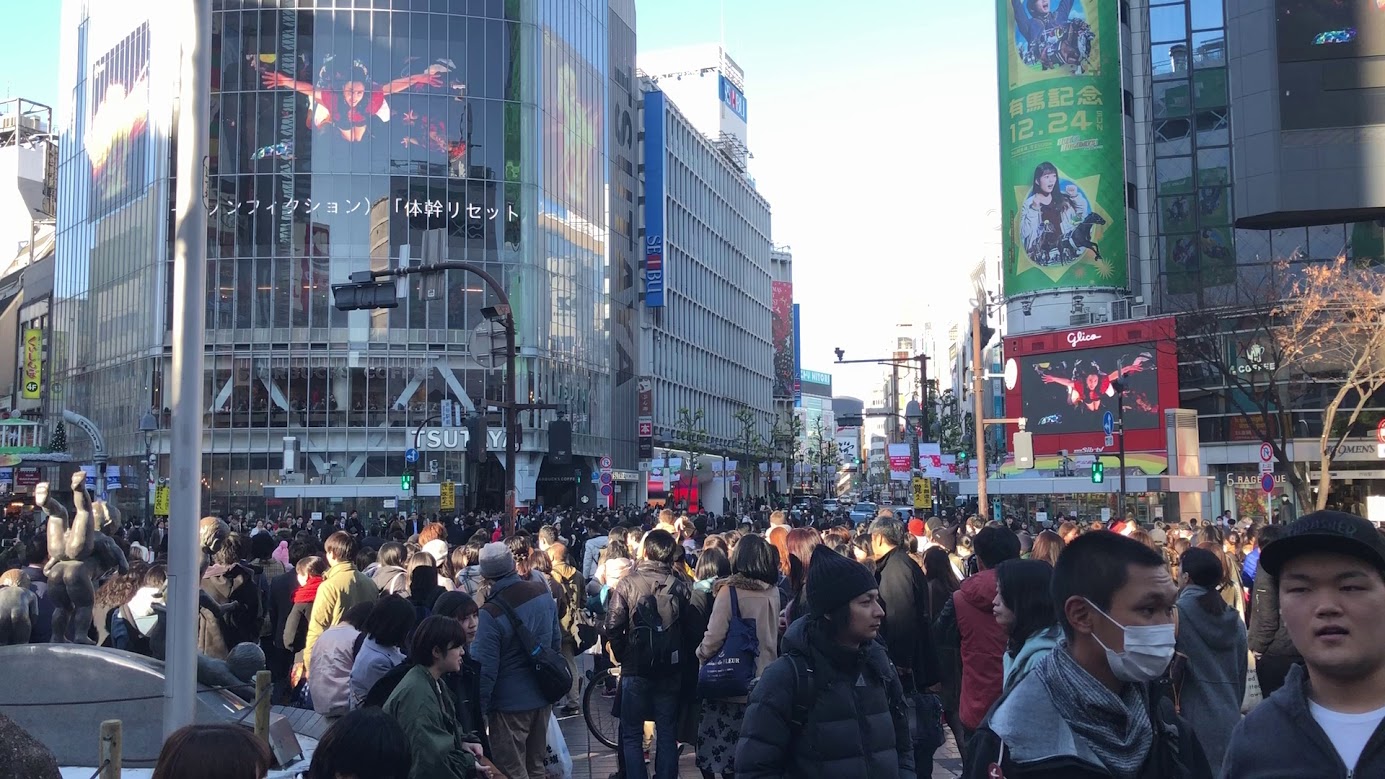 |
| Shibuya Crossing: The famous scramble crossing from Shibuya station into the city |
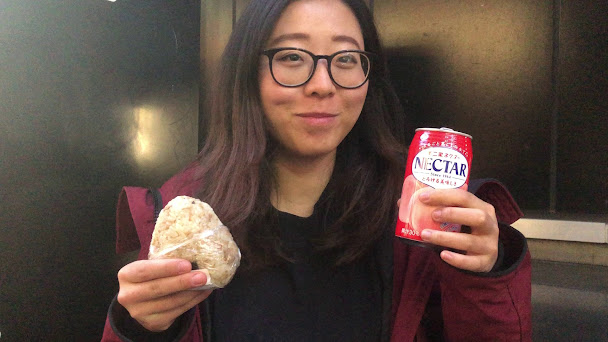 |
| O-nigiri and peach juice snack break |
We picked up our luggage, and used the Yamanote line to Shibuya station. At the Shibuya shopping malls, there were many familiar retail stores (Adidas, Rue 21, Uniqlo, etc.). I’m not familiar with the exact prices, but I believe there are particular brands that are more or less expensive outside of America.
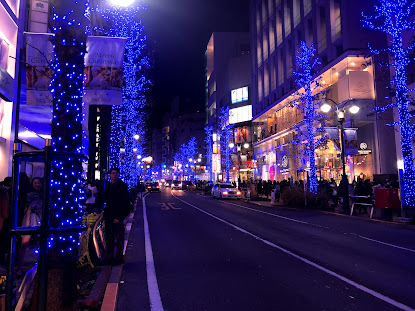 |
| Lights in Shibuya |
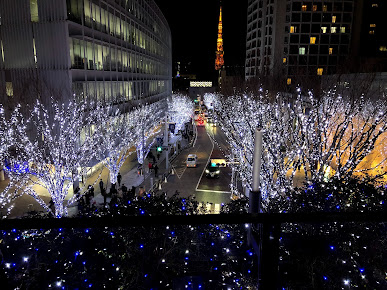 |
| Lights in Tokyo Midtown |
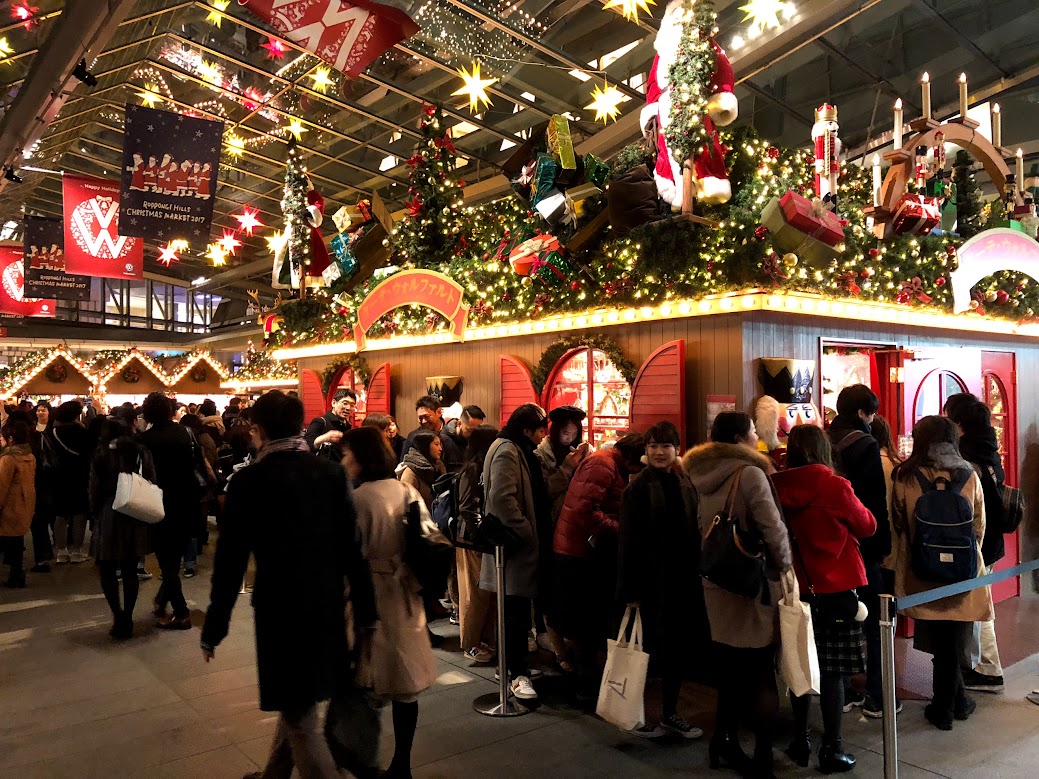 |
| Christmas ornaments shop |
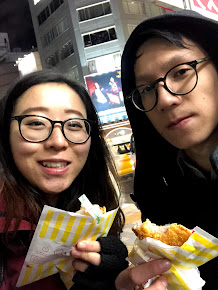 |
| Convenience store fried chicken snack break |

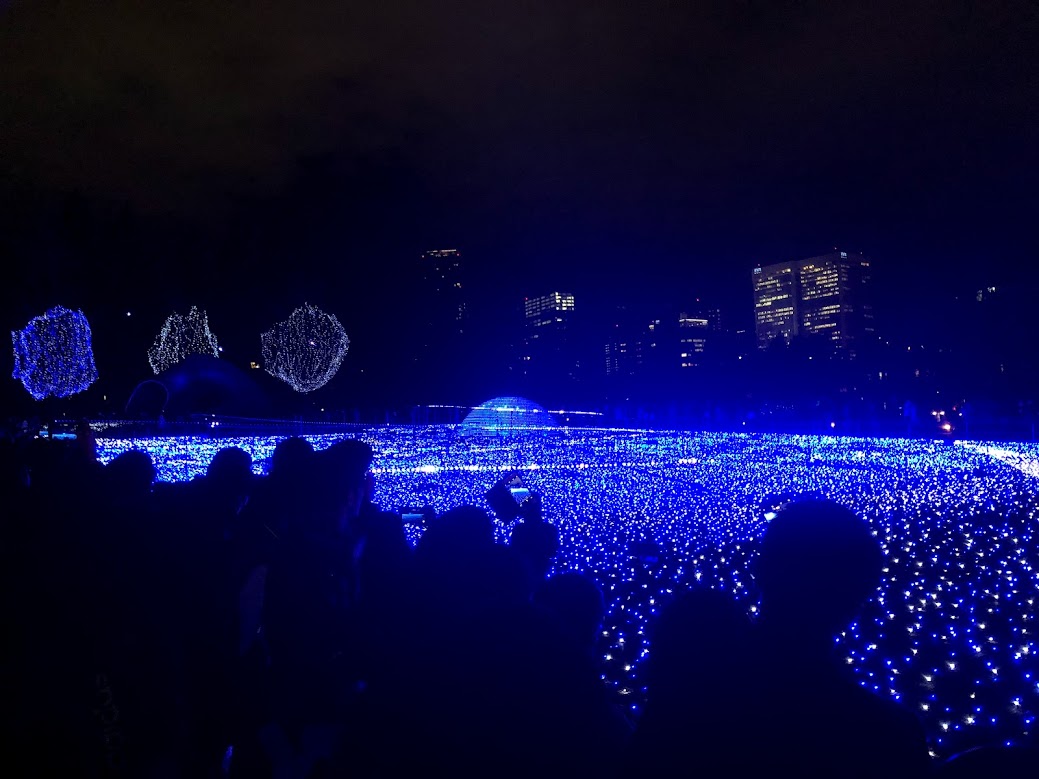 |
| Tokyo Midtown lightshow |
Later in the evening, we took the Hibiya line to Roppongi, which lead us to Tokyo Midtown. Since it was the holiday season (and also it was Christmas), they had a large lightshow. It looked nice.
Our hotel that night was a hostel in Shinjuku, run by a relatively young family. It turned out that the women there was from China, and immigrated to Japan and met her husband. This allowed Xuezhu to communicate with her easily in Chinese, especially since her English wasn’t too strong. This immediately created a sense of comfort and trust. We were able to get some advice from the woman about traveling around Japan.
 |
| Soba noodles, fried chicken, o-nigiri, and bento box of tempura |
The room was a traditional Japanese style room. The mattress and sheets were on the floor, and there were pillows and mats for sitting. There was folding table for eating on the ground too. Since it was such a long day, we decided to order delivery to our room from a nearby restaurant. We got a tempura combo meal that had broccoli, sweet potato, carrot, and shrimp, as well as an onigiri and soba noodles. It was a lot of carbs, but it was satisfying to eat since we were both so tired.






Comments
Post a Comment